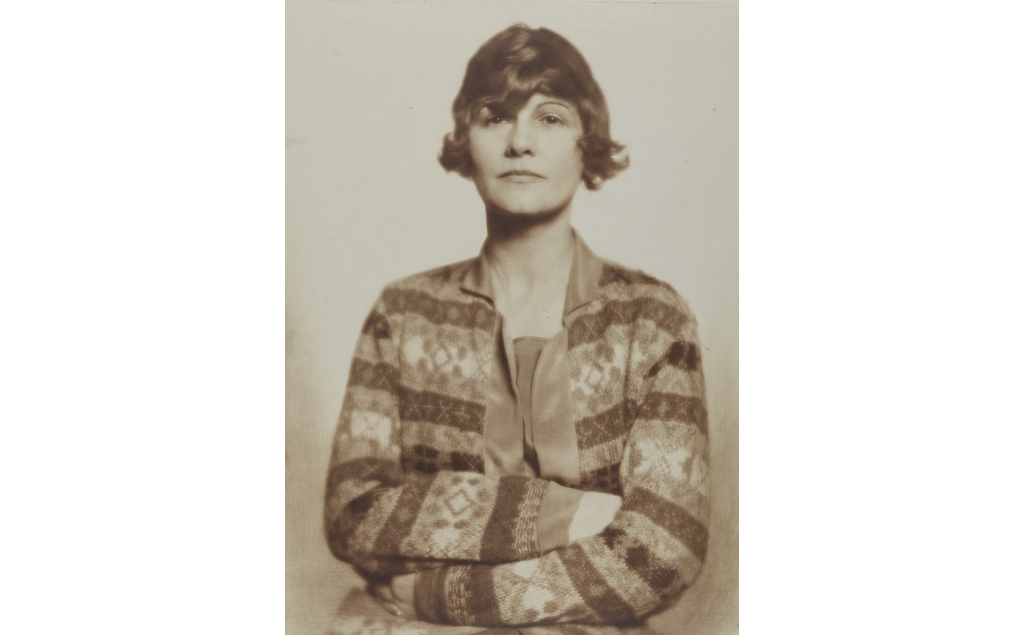Les Années folles de Coco Chanel

Madame d’Ora,
La créatrice de mode Coco Chanel, avant 1923,
Photographie gélatino-argentique
21,8 x 16 cm
Museum für Kunst und Gewerbe Hamburg,
© Estate of Madame d’Ora, Museum für Kunst und Gewerbe Hamburg
To be presented at Villa Paloma during summer 2025, the exhibition “Les Années folles de Coco Chanel” will explore Gabrielle Chanel’s abundant output with specific reference to the Côte d’Azur during the 1920s.
With its display of a selection of textile creations and emblematic works of art produced during this decade, the exhibition will pay tribute to Chanel’s distinctly visionary approach in her invention of the “new woman”. Presenting more than two hundred objects, it will create a unique dialogue between thirty of Gabrielle Chanel’s designs and accessories and forty works by modern artists, including Kees Van Dongen, Pablo Picasso, Marie Laurencin, Natalia Goncharova, Sonia Delaunay, Jean Cocteau, Mikhail Larionov and Alexandra Exter, with, in addition, numerous photographs by Man Ray, Dora Kallmus, Edward Steichen and Roger Schall.
As an extension of this rich dialogue between fashion and the visual arts, the artist Chloé Royer (born in 1989) has been invited to create a series of works for the exhibition. In harmony with Chanel’s creations, her sculptures in bronze, glass and ceramics question contemporary representations of the female body while drawing on the artistic expertise of the fashion industry.
The exhibition “Les Années Folles de Coco Chanel” revolves around three main themes: outdoor life and the growing popularity of seaside leisure; the Ballets Russes and the influence of Slavic cultures; the invention of the “Riviera style”.
At the end of the Great War, Gabrielle Chanel laid the foundations of her future empire in France’s most celebrated seaside resorts. As early as 1912, the first “Gabrielle Chanel” boutique opened in Deauville, offering women’s sportswear made from jersey that overturned the codes of contemporary fashion and liberated the female body. Success was immediate. In 1914, Chanel opened a second boutique, this time in Monte-Carlo, in the luxurious Hôtel Hermitage, where she sold “coats, furs, knitwear, blouses, petticoats, lace, lingerie, parasols, bags and fans”. In 1915, she set up her first couture house in Biarritz, where sixty seamstresses were employed.
In these three famous holiday resorts, Chanel offered high-society women a wardrobe consistent with outdoor leisure in response to the growing popularity of such sports as golf, tennis and swimming. The Principality of Monaco helped pioneer the development of women’s sport when it staged the first Women’s Olympiads between 1921 and 1923. The following year, as part of the 1924 Olympic Games held in Paris, Jean Cocteau asked Gabrielle Chanel to design the costumes for his ballet Le Train Bleu. For the fashion designer, the 1920s were a time of interdisciplinarity and artistic friendships with Serge Diaghilev, Igor Stravinsky and artists associated with the Ballets Russes, whose company was based in Monte-Carlo.
Coco Chanel, who stayed in Monaco on a regular basis, came to settle on the Côte d’Azur. Chanel perfumes came into being in 1921 with the creation in Grasse of the emblematic No. 5, whose bottle became an icon of the Roaring Twenties. In 1923, she opened a boutique in Cannes. And, in 1928, she chose Roquebrune-Cap-Martin as the site for her villa La Pausa, intended as a haven of peace just a few kilometres from Monaco. Photographs taken at La Pausa show Chanel displaying an image of freedom while also personifying the Riviera style. Dressed in a marine top and trousers, and with her hair cut short, her only ornament is her signature pearl necklaces.
Following the international success of the little black dress, which was presented by Vogue in 1926 as Chanel’s “Model T”, the fashion designer produced an endless line of sumptuous clothes for a clientele desirous of originality. The last room in the exhibition will host a selection of dresses adorned with fringes, sequins, tulle flounces, and large silk fans, all designed to dazzle at society events and representative of the Années Folles, when creativity seemed infinite.
The catalogue of the exhibition Les Années folles de Coco Chanel will be published by Hatje Cantz (Berlin).
The richly illustrated volume will display all the Chanel designs to be shown in the exhibition, accompanied by a selection of previously unpublished archive and many works of modern and contemporary art. The catalogue will feature essays by Célia Bernasconi, Bronwyn Cosgrave, Oriole Cullen, Laurence Delamare, Amy de la Haye and Waleria Dorogova.
Curator: Célia Bernasconi
Exhibition design: Christophe Martin
Guest artist: Chloé Royer
With the support of 
